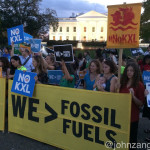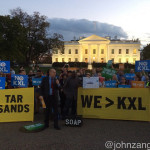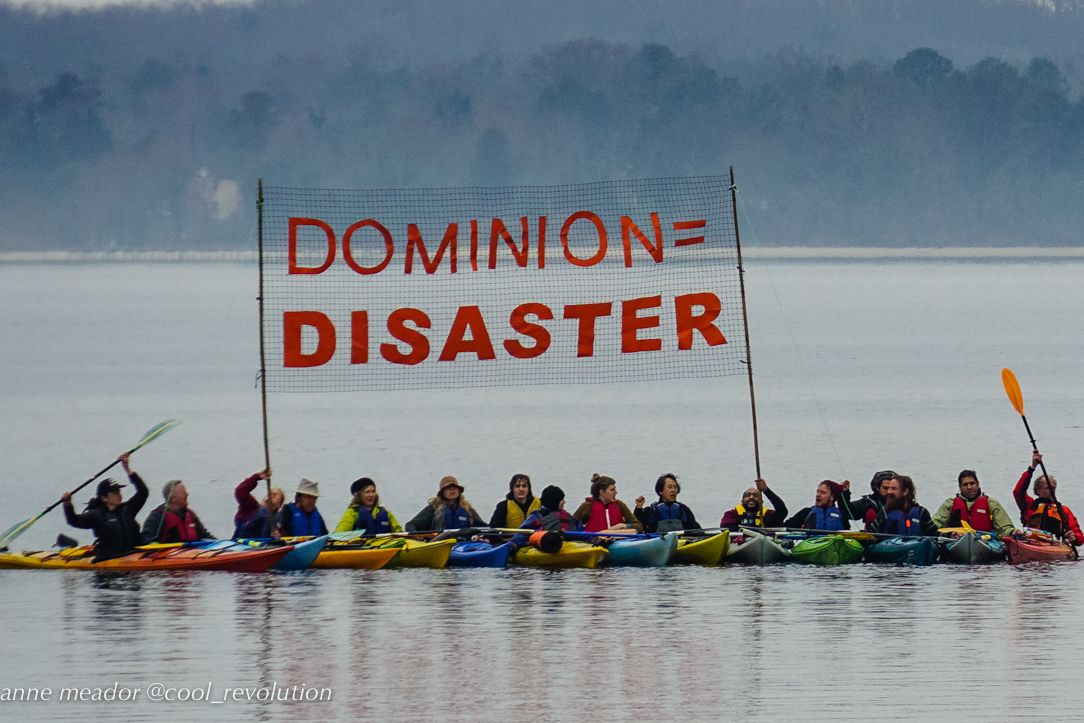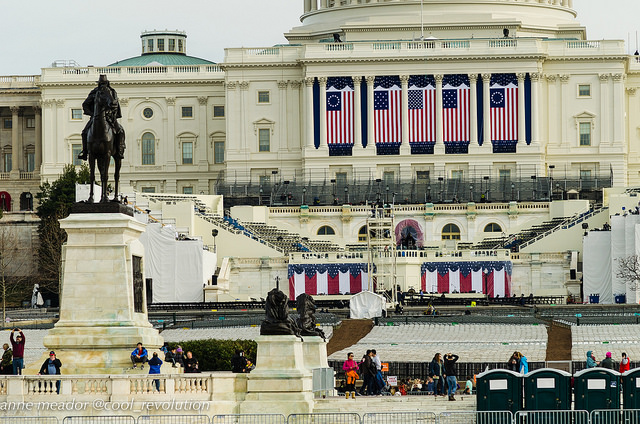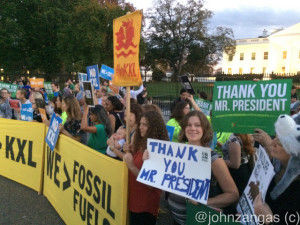
Environmentalists celebrated a major victory over Big Oil on Friday night at the White House after President Obama officially announced he would not approve the Northern leg of the Keystone XL pipeline. The 1,700-mile TransCanada project triggered a seven-year battle joined by scores of environmental groups who worked to defeat it.
Obama’s announcement on November 6 came four years to the day after 350.org, Sierra Club, and many other organizations held a major protest against the pipeline at the White House.
The victory marks the first time that people power of a grassroots movement leveraged political power to defeat a major fossil fuel project. It is likely to embolden green groups to step up efforts to convert energy policies to renewable energy sources like wind and solar.
Had the Keystone XL pipeline been built, it would have resulted in a daily capacity of 860,000 gallons of Alberta tar sands bitumen being transported to Gulf Coast refineries.
A Long Drawn-out Campaign
The campaign to stop the pipeline has been fought in many communities along a route through six states from Montana to Texas. where TransCanada intended to build. The environmental movement against the Keystone XL sprouted from small grassroots community organizations and grew into a full-steam national movement headed by organizations such as 350.org, Sierra Club, and Bold Nebraska.
KXL spawned many protests over seven years as the battle to stop it was waged. There were hundreds of protests, rallies, sit-ins, blockades, strategy meetings, and perhaps as many as a thousand arrests over the last four years. There were also legal challenges which delayed it.
On November 6, 2011 a large contingent of over 12,000 circled the White House in protest of the proposed project in Washington, DC. They surrounded the White House carrying a large inflated replica Keystone XL pipeline. It became a symbol against the project used at many subsequent protests.
Environmentalists used theatrical ingenuity as the campaign progressed. A large black tarp with faux dead wildlife was set in the street outside John Kerry’s home in Georgetown, as well as at the White House, the site of many protests. Protests often included an appearance by “Frosty Paws,” a white polar bear who became a protest icon and symbol of an Arctic habitat under threat from climate change.
Nighttime protests effectively spread protest messaging with blue light panels. The New York Light Brigade and other similar groups spelled out nighttime hashtag messages such as, “KXL Dissent” and “No KXL” in prominent locations such as the White House and State Department. Spectacular photographs of these events were widely spread across social media, further amplifying the campaign messages.
 Many other groups such as Bold Nebraska, Hip Hop Alliance, as well as clergy, played significant roles to help galvanize grass roots support.
Many other groups such as Bold Nebraska, Hip Hop Alliance, as well as clergy, played significant roles to help galvanize grass roots support.
Students at dozens of universities were also involved every step of the way, working to gain support among millennials. Nearly 400 students were arrested on March 2, 2014 during the XL Dissent protest, which marched from Georgetown University, past Secretary Kerry’s home, and to the White House.
In April 2014, Native American tribes joined ranchers and land owners to form the Cowboy and Indian Alliance and pitched camp on the National Mall. They set up tipis and tents for six days, reaching out to the public about the potential impacts of the pipeline on climate and heartland pollution. They also put human faces on the costs experienced by farm and land owners, and Native Americans. The Cowboy and Indian Alliance lobbied at Congress against the pipeline as protested at the Canadian Embassy, the White House, and Secretary Kerry’s home.
There was even a Neil Young once only “Harvest the Hope” concert, also featuring Willie Nelson, held at Art Tandrup’s Nebraska farm in September 2014. The concert drew 6,000 and was seen as a return of the legendary performer to his roots in environmental activism, further drawing attention to the Keystone XL.
Legal Battles Against Keystone XL Pivotal
Court challenges to Keystone XL filed in Nebraska and in South Dakota delayed the pipeline several years. They provided an opening for more political pressure to stop it.
A Nebraska Supreme Court case over eminent domain rights of ranchers pushed the State Department to delay its decision on approval until after the Court ruled.
But the Nebraska Court decision date pushed past the South Dakota State permit expiration date, forcing TransCanada to refile for permits to build it.
Legal action “paper wrangling” prevented the project from getting off the ground in the North section, and like a string of falling dominos, the project was entangled and delayed further.
Pipeline Fighters a Diverse Group
Native American tribes formed the Indigenous Environmental Network KXL Campaign. They joined with Idle No More, an organization of Indigenous people of Canada fighting against tar sands pits in Alberta and pipeline projects across Canada. They focused on Indigenous People’s rights, challenging the Obama Administration on its approval process, thus bringing more political pressure.
Students were in the forefront of many rallies and protests, as well as working unheralded rolls behind the scenes to plan and organize events. Many students working on university campus organizations to divest colleges from fossil fuels, joined the Keystone XL battle.
Collin Rees, a student who later joined 350.org as an organizer, had been involved in the fight against Keystone XL for over four years. “Today is a tremendous victory for the people power movement we’ve built and for keeping fossil fuels in the ground,” he said.
Jason Kowalski, U.S. Policy Director with 350.org, also joined hundreds at the White House to celebrate the victory. “It’s David beating Goliath,” he said. “It’s people organizing to fight corporate greed and that’s what we’ve done here.”
Rees has already begun to look at a larger battle looming–keeping carbon fuels in the ground. “We need to start that momentum today and keep it going through Paris,” he said.


